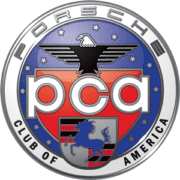On August Track 2011
A quick look back to June had NNJR at Mid Ohio for three days. As opposed to some dodgy weather last year, the conditions this year were ideal and some drivers new to Mid Ohio found out why this track is a favorite of many, including myself. Last year when I wrote about Mid Ohio, I caused a bit of a stir by trying to dispel the notion that the signature right-hander after the back straight was called the “Jump Turn”. Locals refer to this particular turn as “Madness”. At the event, I ran into a few of the long-time local drivers and queried them on the “Jump Turn”. Apologies to a few, but I was vindicated. The turn in question is most certainly “Madness” and there is no “Jump Turn” at Mid Ohio (sorry Bill). Actually, if there was a jump turn, that distinction would more appropriately go to Turn 11, which is the right turn that exits to Thunder Valley, the short straight on the back part of the course. Turn 11 used to have more of a crest to it, and cars used to hop over the hill and take a jump to the left. After the re-paving a few years ago, the crest was flattening so the “jumpiness” was significantly reduced.
Back to Watkins Glen. The village of the same name is located at the southern tip of Seneca Lake in upper New York state. However, most track veterans refer to the track as simply “The Glen”. The track resides some 800 feet above the lake, which can be seen as you charge down the front straight to Turn 1. Racing, however, did not begin on a permanent track but rather through the streets of the village. In October 1948, the first post-World War II road race in the United States was held on city streets. The original course ran for 6.6 miles and passed through the center of the village.The streets used for the original course remain intact today. 1952 was the last year of the original circuit that passed through the center of town. During the Grand Prix, tragedy struck and a car left the course on the start-finish straight, entering the crowd. Twelve spectators were injured and one died. The day’s race schedule was abruptly halted, and never completed. The race would never pass through town again. This was the second year that tragedy occurred while racing through the village and an alternative needed to be found. After some searching, a location was selected in the Town of Dix, on the top of a hill to the southwest of town. The 4.6 mile temporary course was selected using existing roads and would be used for three years.
A permanent 2.3 mile facility was built in 1956 which roughly approximates the current “short course” that NASCAR currently runs (without The Boot). The new track hosted its first professional race in 1957. Buck Baker beat Fireball Roberts in a NASCAR Grand National Stock car race.
The course as we know it today actually came into being in 1971. In 1975, a chicane was put halfway up the hill before the Esses, and was known as the “Scheckter Chicane” in reference to its leading proponent. This chicane was removed when the track was purchased in 1983. The bus-stop chicane (a.k.a., the Inner Loop) at the end of the back straight was added in 1992 after the tragic death of NASCAR Winston Cup driver J.D. McDuffie. Safety renovations have continued over the years, with the addition of catch fences, larger run-off areas and gravel traps.
Alan Jones’ victory in the 1980 United States Grand Prix at Watkins Glen marked the close of an era. Financial difficulties led to the Watkins Glen date being dropped from the Formula 1 schedule and as a result, the bankrupt track closed following a CART race in 1981. The track subsequently fell into disrepair, hosting only a few non-spectator SCCA weekends. The Glen reopened on July 7, 1984, with Al Holbert, Derek Bell and Jim Adams winning the inaugural Camel Continental at the renovated facility. The track has hosted every major racing series, including Formula 1, and the list of champion drivers to grace the track is endless. Today the track appears to be enjoying a busy schedule. A capital improvements project included the completion of a new Media Center in 2008 which replaced the old tower adjacent to the front straight. NNJR will continue to come to The Glen to conduct high performance driver education events at the greatest track on the planet.
The Watkins Glen area also provides diversions for the non-driver. Watkins Glen State Park is at the base of the hill that the track sits on, and everyone should hike the two miles up the narrow trail at least once. Within these two miles, the glen’s stream descends 400 feet past 200-foot cliffs, generating 19 waterfalls along its course. The gorge path winds over and under waterfalls and through the spray of Cavern Cascade. Wine lovers can enjoy the Seneca Wine Trail, featuring 34 wineries around the lake. The eleven Finger Lakes boast over 120 wineries, with half of those surrounding Seneca Lake. The first winery was established in the 1860’s, and by 1900 the region had more than 20,000 acres of vineyards and 50 wineries. The Finger Lake region provides an ideal environment for growing cool weather grapes: Reislings, Gewürztraminers and chardonnays. Not limited to white wines, some very fine pinot noirs and cabernet francs can be found. The southern tip of Seneca Lake is also the site of the Corning Glass museum which houses the world’s most comprehensive collection of glass with over 15,000 objects on display. If you are so inclined, you can also create your own design at one of the make-your-own workshops.
Keep the shiny side up!


